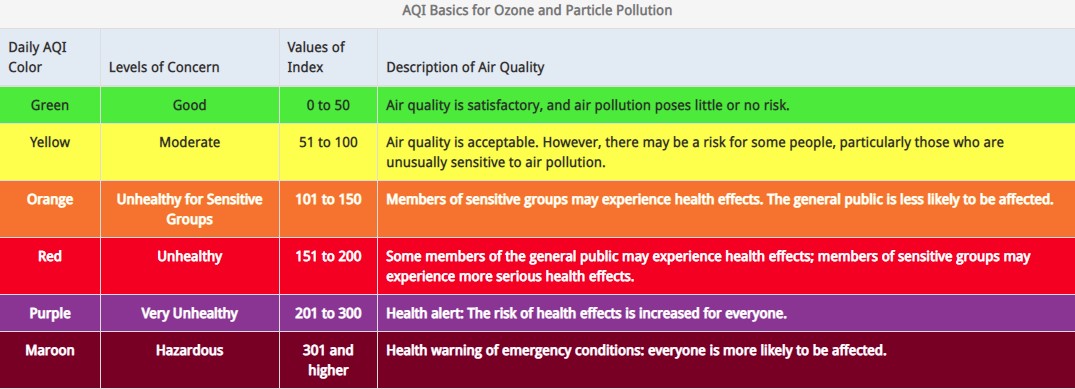Air Quality Index and Particle Pollution 
Ozone
Ground-level ozone pollution is different than the ozone layer of the atmosphere that protects us from harmful radiation from the sun. When ozone is lower in the atmosphere, it causes harmful pollution. Ground-level ozone pollution is created when oxides of nitrogen (NOX) mix with volatile organic compounds (VOCs) in the presence of sunlight. Generally, VOCs are things you can smell like cars, trucks, trains, and busses that run on gas.
Negative impacts of ozone pollution include:
- Stinging eyes and throat.
- Chest pains.
- Coughing.
- Breathing difficulty.
What Can I Do? Here's How to Take Action on Air Quality:

Learn more about air quality, ozone, and what you can do to impact and improve it!
Visit these activity guides for additional information on how and when to adjust your activity levels depending on air quality: